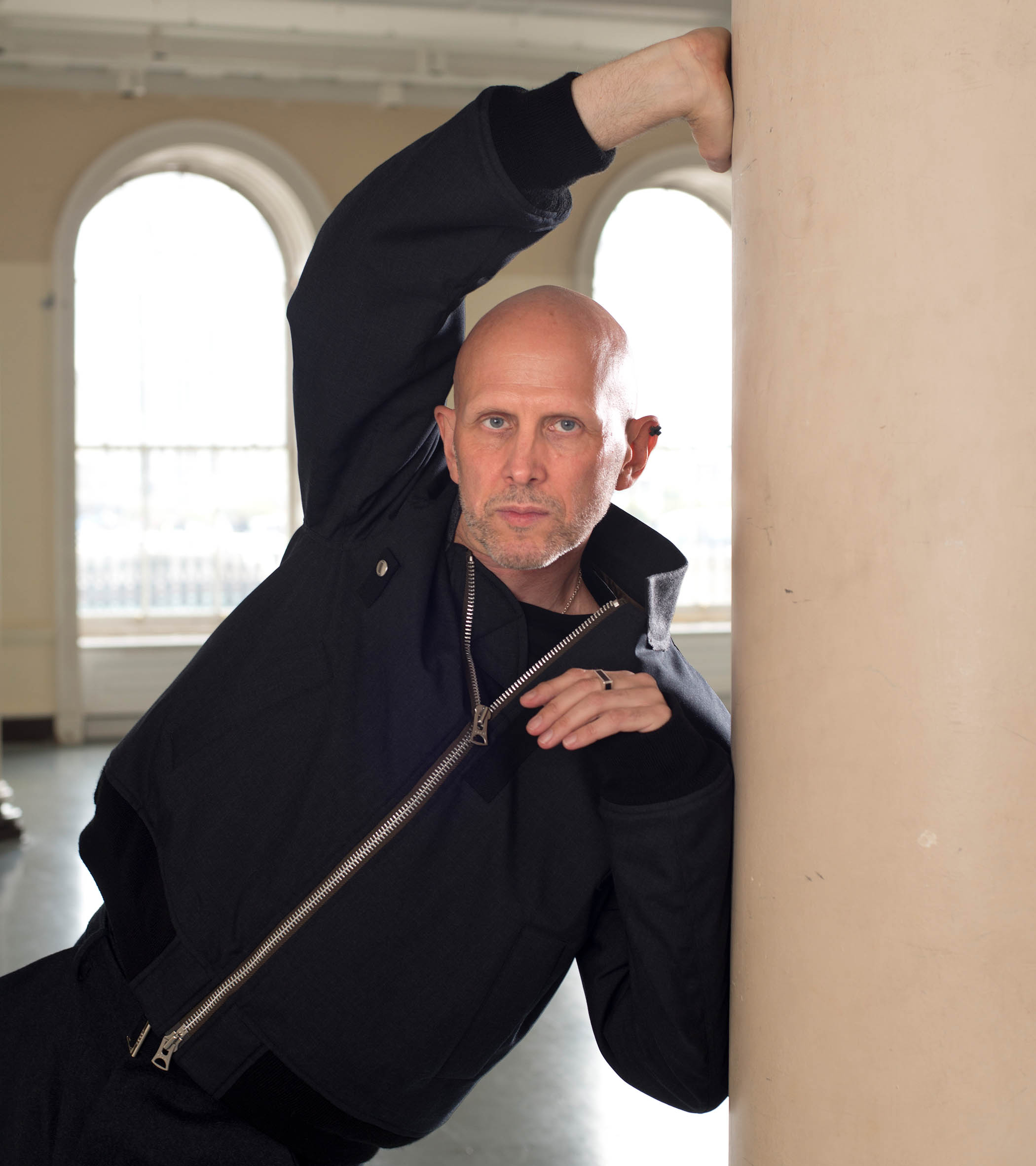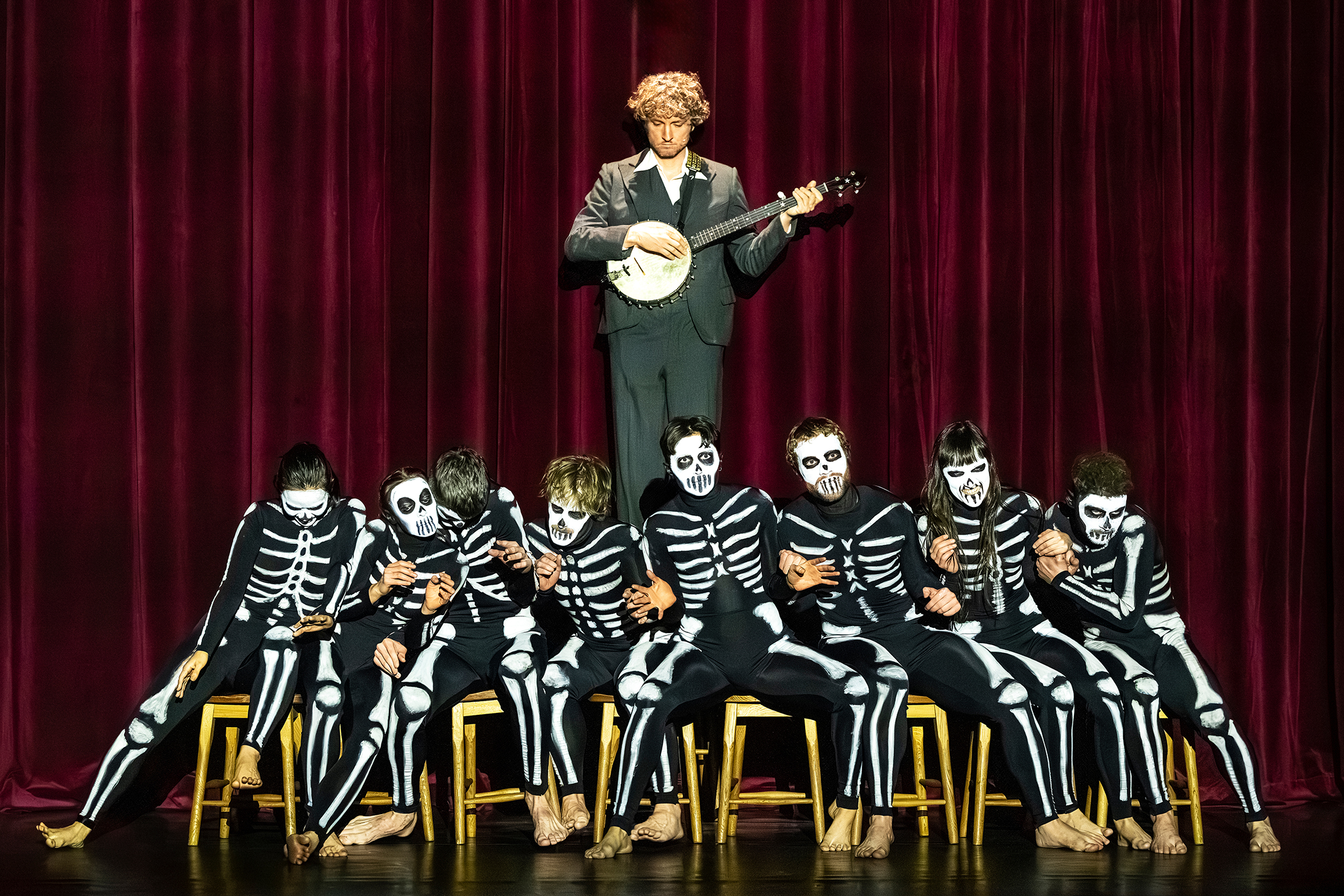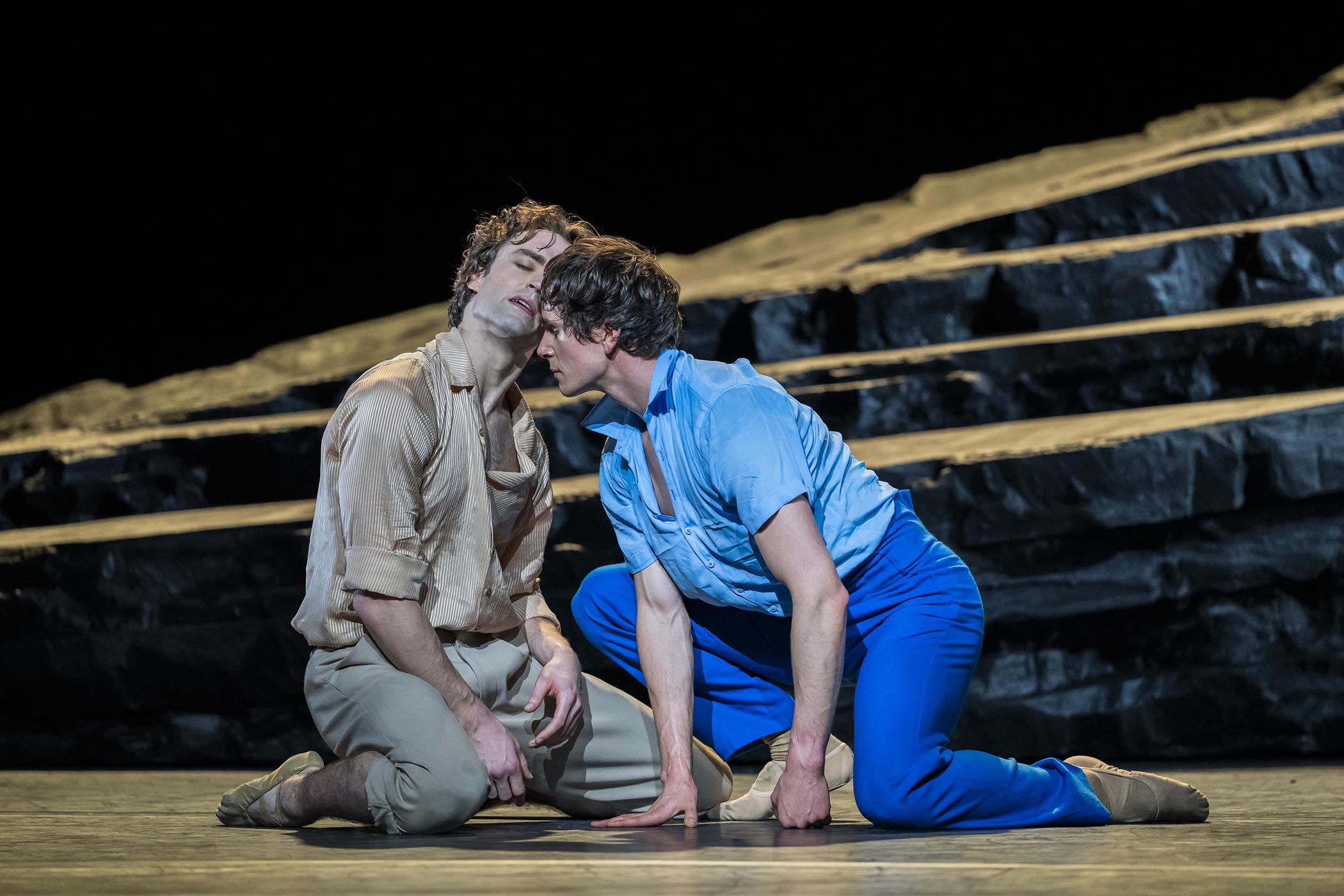The night before we meet, Wayne McGregor went to Abba Voyage, the virtual concert by the Swedish pop band that he choreographed. “It’s bewildering to me, but increasingly the whole audience is dancing. They might only be swaying or moving their arms, but it is this massive movement choir for the whole of the show. The joyfulness of that, of people essentially watching light be constructed as an object, really gives me faith in the possibility of technology to work at human scale and be emotionally redolent.”
His happiness is infectious. McGregor has always been a man of wide-ranging enthusiasms, an open-minded collaborator and creator. He is resident choreographer of the Royal Ballet, head of Studio Wayne McGregor and artistic director of the Venice dance biennale. He works in film, theatre and opera. In each sphere, he harnesses the latest technology to expand the art of dance, to understand movement and perception.
“I always want to try to say that dance is just a part of us, an extension of human communication and stuff we already do,” he says. “So often people say, ‘Oh, I just don’t get dance.’ To me that’s like saying, ‘I don’t really understand myself in relationship to my physical dimension in the world.’”
His latest project is Infinite Bodies, an exhibition that fills the galleries of London’s Somerset House with installations, performances and archive material celebrating and explaining the way that we experience the world through our bodies. One installation – On the Other Earth, a dizzying, moving plunge into a performance – is so large it wouldn’t fit into the main exhibition and is being shown at Stone Nest, the former Limelight Club in the heart of the West End. Another takes the motion capture technology used to create the Abba avatars to explore what we recognise as human. “The exhibition is massive,” he says with a grin. “Big. And the objects are fun. They’re like beautiful connectors for people who maybe have never been to see dance before, because they put you at the centre of them. When you go through this archipelago of art objects, you are made aware of different attributes of your own physical intelligence.”
At the heart of the show is McGregor’s first computer from the 1980s, still lovingly stored in its box. “It’s almost pristine,” he says proudly. He was an early adopter, graduating from the Texas TI-99/4 to the ZX Spectrum, spending happy hours copying code, watching as a programmed sequence of 0s and 1s made a worm run across the screen.
“I used to love the feeling that one could take something inanimate – numbers – and make something animate,” he says. He is indebted to his parents: “They must have saved quite hard for that computer. At that point, personal computing was just starting. It wasn’t automatic. I was obviously curious about what tools were available to me to develop my creative experience. And they supported that.”
Growing up in Stockport in the 1970s, McGregor would put on a light blue shirt with silver thread, push back an unruly mop of hair, like John Travolta, and take to the ballroom floor. He was always making dance – he choreographed ballroom routines for his classmates and later studied choreography in depth – but his interests in both science and art jostled for attention.
“I was always the kid with petri dishes and frogspawn,” he says. “Looking back, I can see why I would be interested in the things that I am interested in now. The life of the sciences was part of the conversation. But dancing is the thing that always just made me feel really free.”
These twin pursuits power Infinite Bodies. The objects – beautiful in themselves – encourage us to think about choreography in its broadest sense: not as steps on a stage, but as a discipline that understands the relationship between bodies and the world. McGregor gives an example. “We have a thing called interoception, which is our chemical self. If we are hungry and on the Tube, this means we are more primed to look for cafes than for stairs,” he says. “So our spatial self is dictated by our chemical self. This relationship between body, time and space is something we are navigating all the time. We do it in dance. But we can learn a lot from how these experiences allow us to see a different version of our physical lives.”
For McGregor, this lesson is more urgent than ever. As so much of existence is now mediated through 2D screens, it is more important to appreciate the 3D space in which we live and breathe. “A lot of the art works look at the nature of presence in a virtually mediated world and how, using AI and technology, we can get closer to a digital world that is more believable,” he says.
He is an enthusiastic proponent of AI. One exhibit allows members of the public to build their own routines by prompting a machine to create a dance phrase that is matched with the nearest pattern from McGregor’s archive. They can then manipulate the result, elaborating their own choreography. “In a world where we are so nervous about AI, it’s a beautiful way of explaining that if you think about it as a tool, in the same way you think about a pencil or a camera, the human can be in the conversation.”
McGregor believes creative industries and individuals must engage with AI if it is to be shaped into this useful tool. “You want to be able to test and push all those algorithmic possibilities in creative dimensions rather than just for finance or pattern definition,” he says. “As soon as we talk about how we license it, how we restrict it, what its ethics are, how we can make sure AI is in the service of humanity, the creative dimension is vital.”
These beliefs feed into McGregor’s frustration with the undervaluing of the arts. “The most bizarre thing about our education system is that there is this massive reduction for funding in the arts and creative thinking, while at the same time saying let’s put more money into AI,” he says. “What we should be saying is let’s put way more money into creative art experiences … It feels like an emergency tipping point.”
McGregor is now in a position to make such concerns known at the highest levels: he was knighted in 2024. “I think it’s not a personal recognition,” he says. “It’s reminding the world that art-making is as important as working in technology or banking. But for me it was also an acknowledgment that this working-class kid from Stockport, who didn’t go to a conservatoire but was obsessed with choreographic practice, can work in a range of domains that might be seen as elite, inaccessible institutions. I’m very proud of that. I feel it’s a good signal. And the young artists I work with now, many of them from similar backgrounds, without access to arts education, do look at my career as an example of what can be done if you just have that commitment, work ethic, and ask the right questions.”
His own work ethic remains as strong as ever. Even while he was busy organising the exhibition at Somerset House, he put on a double bill of Stravinsky’s opera Oedipus Rex and a new version of Antigone by Samy Moussa for the Norwegian National Opera and Ballet; and has begun working as movement director on Porn Play at the Royal Court with his long-term collaborator, the director Josie Rourke.
“It’s not an ambition to be busy,” he says. “I am drawn to the unknown, where I can adopt a beginner’s mindset.” Does he ever feel in need of a break? He laughs. “I don’t think in art-making there’s a separation between living and working,” he says. “I just love making things.”
Wayne McGregor: Infinite Bodies is at Somerset House from 30 October until 22 February, and Wayne McGregor: On the Other Earth is at Stone Nest, also from 30 October until 22 February
Photograph by Sophia Evans for The Observer



